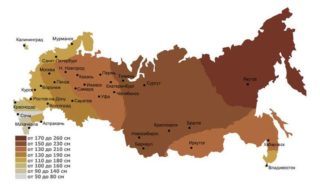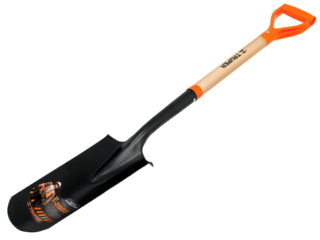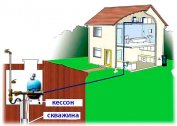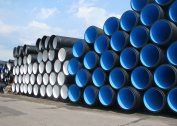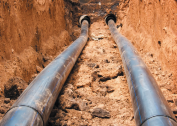A trench for water supply is what begins with the supply of water to a private house, cottage or country cottage. The correct digging in the future allows avoiding freezing of the water supply line laid in it in winter, and provides good pressure and water quality. The seemingly simple process of digging a trench includes many nuances - from the correct choice of the depth, width and cross-sectional shape of the trench to the distance from other nearby communications.
Preparatory work
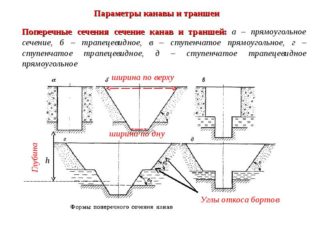 Before you start digging a trench, you need to calculate its depth, width, prepare all the necessary tools and materials, mark the boundaries.
Before you start digging a trench, you need to calculate its depth, width, prepare all the necessary tools and materials, mark the boundaries.
Depending on the type of soil at the site of the trench, the cross section may take the following form:
- Trapezoidal - has side walls slanted at an angle of 45-60 degrees. Well suited for trenches on all types of soils, but is most justified when digging a ditch on light sandy soils. A trench with such a cross section is more laborious, takes up a considerable area and a lot of time.
- Rectangular - used when digging trenches on cohesive sandy loam, loam, clay. It is characterized by sheer walls and a small width. When digging on sandy loam, the walls of the ditch are strengthened with planks and cross-braces to avoid soil crumbling.
- Combined (mixed) - has beveled side walls and a small section of the bottom with a rectangular cross-section, starting from the upper level of the water tank or groundwater. A trench with this cross-sectional shape is suitable for light soils, laden with a certain depth of heavy clay, loam; for places with a high level of occurrence of groundwater (GW).
 Trench width depends, first of all, on the method of digging it:
Trench width depends, first of all, on the method of digging it:
- When digging manually, the trench is made so wide that it is convenient to work with a shovel, pickaxe and other tool, while the hand holding the tool does not scratch the walls of the ditch. The optimal width of the ditch with this method is at least 70-80 cm.
- When digging using various techniques, the width of the ditch is determined by a similar indicator of the working body of the excavator, trencher.
The digging depth of the water trench according to SNiP 2.04.02-84 should be 50 cm below the level of soil freezing, indicating how much the soil freezes for the average winter for a given region.
Estimated depth of soil freezing for various regions of Russia.
| Region / City | Depth of soil freezing according to SNiP, cm | ||
| Loamy
and clay soils |
Fine-grained
(dusty) sand, sandy loam |
Coarse grained
and gravelly sand |
|
| Middle lane | |||
| Vologda | 143 | 174 | 186 |
| Yekaterinburg | 157 | 191 | 204 |
| Kazan | 143 | 175 | 187 |
| Moscow | 110 | 134 | 144 |
| Nizhny Novgorod | 145 | 176 | 189 |
| St. Petersburg | 98 | 120 | 128 |
| Saratov | 119 | 144 | 155 |
| Eagle | 110 | 134 | 144 |
| Ryazan | 136 | 165 | 177 |
| Samara | 154 | 188 | 201 |
| Yaroslavl | 143 | 174 | 186 |
| Mean | 133 | 161 | 173 |
| Siberia | |||
| Novosibirsk | 183 | 223 | 239 |
| Surgut | 222 | 270 | 290 |
| Tyumen | 173 | 210 | 225 |
| Chelyabinsk | 173 | 211 | 226 |
| Mean | 188 | 229 | 245 |
| Southern areas | |||
| Rostov-on-Don | 66 | 80 | 86 |
More accurately calculate the depth of soil freezing by the following formula:
Hpr = √∑t × K
where, Нпр is the depth of soil freezing,
∑т - the sum of the average monthly temperatures for the winter, excluding the minus sign,
K - correction factor, which takes the following values depending on the granulometric composition of the soil:
- Clay and loamy soils - 0.23;
- Fine sand and sandy loam - 0.28;
- Coarse sand - 0.3;
- Rocky soil - 0.34.
Thus, for the Middle Strip, the digging depth of the water trench is from 180 to 220 cm, for Siberia - 230-300 cm, for the southern regions - 110-140 cm.
Distance from other communications
When digging a ditch for laying a water pipe, you should do the following indentation from the nearby communications:
- gas pipeline - 1 m;
- telephone cable - 0.5 m;
- power electric cable -0.5 m;
- sewer pipe - 0.2 m.
Information on the passage of sewage trenches, telephone, power cables, and gas pipelines at digging sites should be obtained in advance from organizations that own these communications.
Markup
The contours of the trench on the ground are determined as follows:
- From the source of water supply to the place of entry of the water pipe into the house, a minimum path is laid using a measuring tape or cord.
- In the place where they will dig a trench, all shrubs, flower beds, stone paths are removed, the porches for a wheelbarrow or small-sized construction equipment are freed up: a mini-tractor, an excavator, a trencher. Also at this stage, they provide for places where the soil taken out when digging a trench will lie.
- The center line of future trenches is indicated by stakes driven into the ground and a nylon cord stretched between them.
Materials and Tools
To dig a water trench, the following tools are needed:
- bayonet shovel,
- scrap,
- pickaxe
- wheelbarrow,
- hammer,
- stakes
- nylon cord,
- Measuring bar with a ruler.
To strengthen the walls of the ditch, use an unedged board and spacers from bars. To protect the eyes and respiratory organs when working with dusty soils, goggles and respirators are used.
Methods of digging a trench under the water supply
Manual digging provides for digging a ditch under the water supply using a trench tool - a shovel, pickaxe, scrap. Apply this method with a small length of the trench and limited space, inconvenient for the entrance and operation of the equipment.
The advantages of this method:
- low cost - digging a trench on your own will cost several times cheaper than hiring special equipment;
- a small set of tools - with this method they use simple trench tools available for any owner;
Disadvantages:
- duration - compared with a mechanized digging, sometimes taking 1-2 light days, such a process will last 3-4 times longer;
- laboriousness - manual excavation requires significant physical effort, this is especially felt when digging trenches on heavy and dense clay and loamy soils.
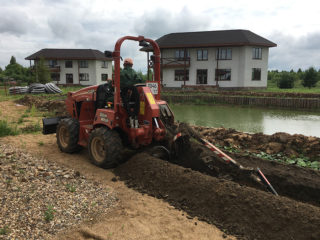 For mechanized digging trenches for running water use an excavator mounted on a walk-behind tractor, or a mini-tractor trencher - a special cutter that allows you to make narrow and deep ditches.
For mechanized digging trenches for running water use an excavator mounted on a walk-behind tractor, or a mini-tractor trencher - a special cutter that allows you to make narrow and deep ditches.
Mechanized digging is used when digging trenches of long length (more than 20-30 m.) In places with normal entrances and sufficient space for the operation of the equipment.
Benefits:
- the minimum amount of excavation - with this method, the minimum amount of soil is extracted, so that the narrowest ditch is obtained, into which the water pipe fits well;
- short lead time - the use of special equipment allows you to dig trenches very quickly, without delaying further work on laying the water supply and connecting it to a water source.
Disadvantages:
- high cost - in comparison with manual digging, the use of equipment will cost several times more;
- the inability to use in places with limited space, for example, in a small cottage with a small personal plot.
Self digging trenches
When building a private house, cottage or cottage, with a small amount of work, it is more profitable to quickly dig a trench for the water pipe with your own hands, without resorting to the services of expensive equipment and specialists. This process consists of the following steps:
- marking the contour of the trench with stakes and a nylon cord;
- removing the fertile soil layer and storing it at a distance of at least 1 meter from the edge of the ditch;
- excavation of underlying soil layers and laying them separately from the fertile layer;
- shelter of the soil removed from the trench with a plastic film to prevent its erosion and getting wet in the rain;
- Strengthening the walls of the ditch with boards and spacers, to avoid crumbling.
When laying water pipes under an asphalt or dirt road, a “puncture” is performed. To do this, from two sides it is necessary to dig two trenches 1.5-2 meters more than the width of the roadway. After that, a steel pipe with a sharpened end is inserted into the steep wall of the ditch, bordering the road. With this pipe, striking the opposite end with a sledgehammer pierces (“punctures”) the thickness of the soil under the road without laborious and costly excavation work. In a similar way they break through the foundation of a long-built house.
Price per linear meter
The average price per meter of digging a trench for water supply by the contractors involved for this depends on the method used:
- When manually digging a ditch under the water supply, a running meter at a depth of 130-150 will cost 1000 -1200 rubles. This cost includes the remuneration of workers digging a trench and the profit set by the contractor.
- The price for which mechanized trenching with an excavator or trencher will be made varies from 8,000 to 10,000 rubles. for an 8-hour day of operation of equipment. This price includes the cost of the fuel spent by the equipment, its depreciation, the operator’s salary, and profit.
Digging a trench under a large water pipe is more profitable and convenient using special equipment. With this method, in less than 2 days the ditch will be dug and ready for pipe laying, while manual digging will take several times longer.
